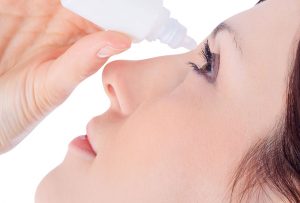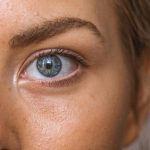Dry Eye Disease
Dry eye disease (DED) is very common and frequently misdiagnosed by health care professionals. We specialize in the detection and early treatment of DED. Also known as Dry Eye Syndrome (DES) and Keratoconjunctivitis Sicca(KCS). It is a multi-factoral disease of the tears and front surface of the eye.

What are the Signs and Symptoms of Dry Eye Disease?
- Itchy eyes
- Red eyes
- Foreign-body sensation
- Fluctuation vision
- Blurred vision
- Headache
- Excessive tearing
- Light sensitivity and glare
- Decreased wear time in contact lenses or inability to wear contacts
Someone with DED may experience all or some of these in one eye or both.
Dry Eye Syndrome Diagnosis
In many cases the symptoms themselves can give us a diagnosis but we also have multiple types of dry eye testing that may be performed when indicated, including:
- Dye testing
- Tear Film Osmolarity
- Tear Break-up time
- Imaging of the meibomian glands
- Ocular surface matrix metalloproteinase 9 (MMP-9)
Your symptoms may classified as mild, moderate , or severe
Dry Eye Treatment Options
For effective therapy, you must first understand what’s happening and a correct diagnosis must be made. The front surface of the eye is bathed in a very thin, very complex layer of tears to maintain its health and integrity. It is composed of an oily, a watery (or aqueous layer), and a mucus layer. Which layer is affected determines the correct dry eye treatment.
Our doctors will determine whether you have aqueous deficient dry eye or an evaporative dry eye condition. They are treated differently!
In aqueous deficient dry eye, there is a deficiency in the watery layer of the tear film, which could be indicative of an auto-immune process. It is important in these cases to have testing done to rule out these processes. If these tests are necessary, our doctors will have them performed.
The majority of patients we see have an evaporative dry eye, and in those cases, we have an exciting new dry eye treatment available. In evaporative dry eye, it is the quality of the tears that cause the problems vs the quantity. Due to poor oil quality, the tear film is unstable and evaporates at a rate quicker than your blink rate. This results in inflammation that affects the structures on the front part of the eye and leads to the symptoms of DED
Lipiflow Treatment
Our Lipiscan and Lipiflow treatment system is a new dry eye treatment that is now available in our office that can allow us to properly diagnose DED at its earliest and most treatable stages. Effective early diagnosis and intervention is essential in preventing our patients from progressing from mild to moderate to severe DED and we are excited to be one of the few dry eye clinics to offer this Lipiflow treatment procedure.
Lumenis Intense Pulsed Light (IPL) for Dry Eye
Looking for relief from your dry, itchy eyes? Piedmont EyeCare offers the latest in Lumenis Intense Pulsed Light (IPL) for dry eye treatment, which uses specialized technology that can heat and massage the glands around the eyes. This non-invasive procedure encourages better eye lubrication and reduces inflammation, providing immediate relief to dry eye symptoms and long-lasting results.
What is IPL?
Intense Pulsed Light (IPL) is an advanced medical technology that uses light energy to treat a variety of skin and eye conditions. IPL can be used for dry eye treatment, as it targets the glands around the eye to encourage better lubrication and reduce inflammation. This non-invasive procedure works by delivering precise pulses of light energy to the affected area, and can provide immediate relief for dry eye symptoms.
How does IPL work?
IPL works by delivering precise pulses of light energy to the glands around the eyes, which absorb the light energy This can help to improve the function of the glands, leading to better eye lubrication and reduction of inflammation. IPL treatment for dry eyes is non-invasive and requires no downtime or recovery, making it an excellent option for those suffering from dry eye symptoms. At Piedmont EyeCare, our experienced team will guide you through the IPL treatment process to help you find relief from your dry eyes.
Is IPL safe?
Yes, IPL treatment is safe and approved by the FDA for treating dry eye symptoms. The treatment is non-invasive, and there is no downtime or recovery period required. Our team at Piedmont EyeCare uses advanced Lumenis IPL technology and has experience in treating patients with dry eyes. While there may be minor side effects such as redness or temporary discomfort, these are typically mild and resolve within a few hours to a few days. IPL treatment for dry eyes is an effective and safe option for those seeking relief from dry eye symptoms.
| Contact us to Schedule an appointment with an optometrist at Piedmont EyeCare. |




